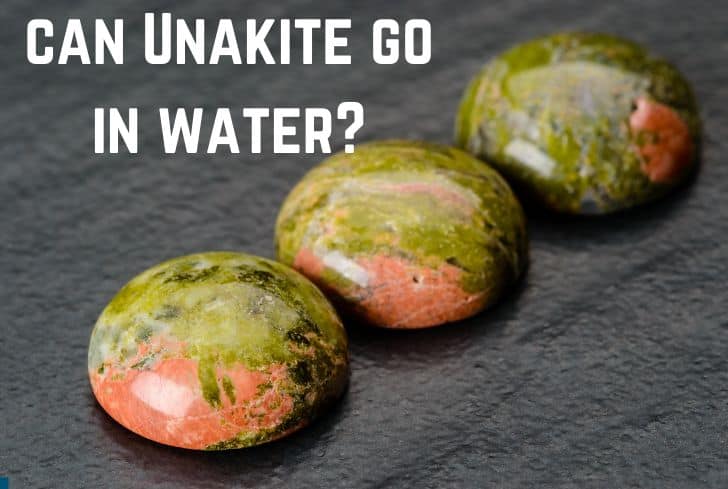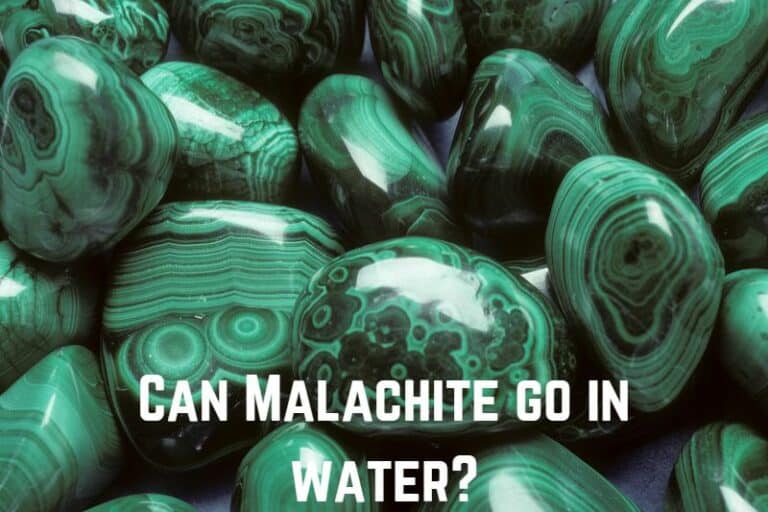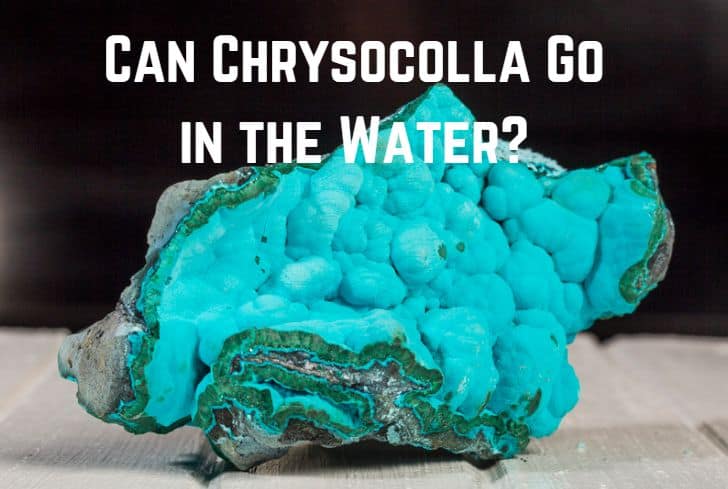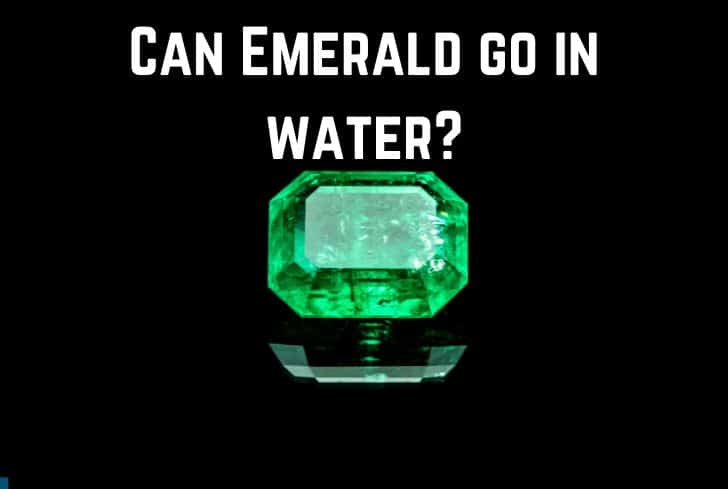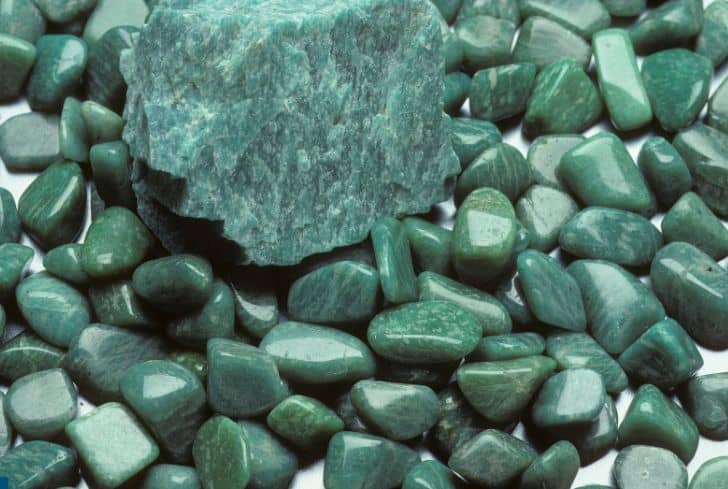13 Different Types of Purple Rocks and Minerals (+Pics)

Purple rocks and minerals have always been a fascinating topic for collectors, jewelry enthusiasts, and geologists alike. The wide range of purple shades, from light lavender to deep violet, is visually captivating and adds a touch of elegance to any collection. As you delve into the world of purple gemstones, you’ll be amazed by their variety and beauty.
Figuring out the different types of purple rocks and minerals can be both challenging and rewarding. Learning about their formation, crystal structure, and uses can provide a deeper understanding of the geological processes that shaped our planet. This article will explore 13 stunning examples of purple rocks and minerals, each with unique characteristics and appeal.
By exploring these purple treasures, you’ll not only expand your knowledge of geology but also develop an appreciation for the beauty and diversity found in the natural world. So, get ready to journey into the realm of purple rocks and minerals and discover the striking colors and hidden wonders that await you.
13 Different Types of Purple Rocks and Minerals
1. Amethyst
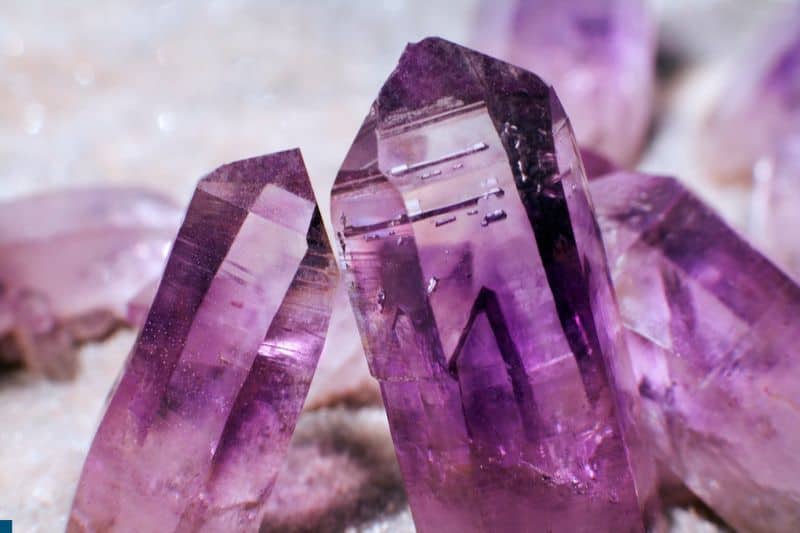
Amethyst is a beautiful and captivating purple variety of the Quartz mineral. It has captured the attention of many, and you might find yourself enchanted by its various shades ranging from light lavender to deep, intense royal purple.
If you’re new to the world of amethyst, you’ll be amazed by the fact that its color originates from iron impurities within the quartz. The shade of the purple can differ depending on factors such as the location and temperature where it is formed.
You can find Amethyst in various forms, from druzy encrustations to geodes and even polished gemstones. These versatile stones are visually stunning and have a rich history of cultural and spiritual significance dating back many centuries.
As you continue to explore the world of Amethyst and other purple rocks and minerals, you might stumble upon rare pieces sourced from Siberia, Africa, South America, or even closer to home. Each piece will carry its own unique characteristics and charm, inviting you to dive deeper into the fascinating world of these captivating purple gems.
Remember, while collecting Amethyst, always look for variations in the stones, making them more unique and exciting. The distinctiveness comes from the natural patterns formed during the stone’s creation, making each one an exceptional work of art by Mother Nature. So, enjoy your journey in discovering these purple gems and don’t forget to have fun along the way!
2. Sugilite
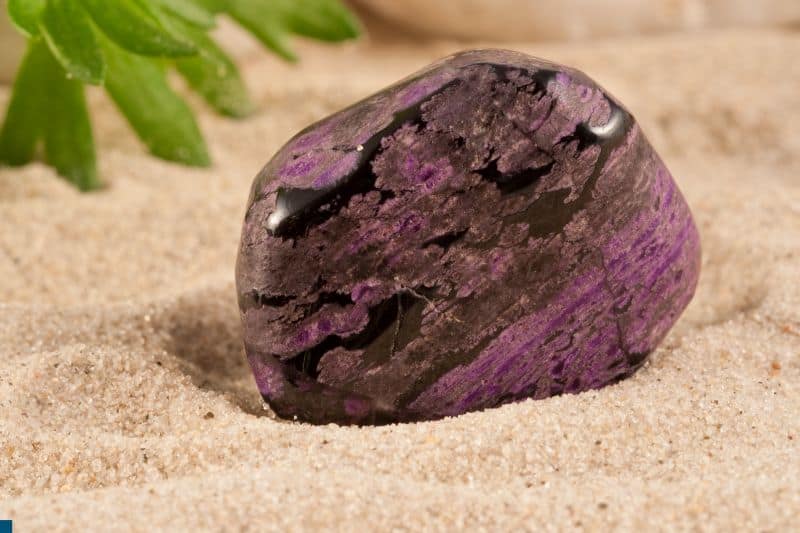
Sugilite is a fairly rare pink to purple gemstone and silicate mineral, making it a unique addition to your collection of purple rocks and minerals. Its complex chemical formula is KNa2(Fe, Mn, Al)2Li3Si12O30, and it crystallizes in the hexagonal system with prismatic crystals. Interestingly, these crystals are rarely found, and the form is usually massive.
You’ll be pleased to know that sugilite has a Mohs hardness of 5.5-6.5, which means it’s a relatively durable mineral. It also has a specific gravity of 2, making it a lightweight addition to your collection. Sugilite can be found in places like the Wessels Mine in Northern Cape Province, South Africa.
Some distinguishing characteristics of sugilite include its vivid purple color and slight color shift depending on the light. The color can range from a deep purple-red to a light pinkish-purple, allowing it to capture your attention and imagination with its stunning appearance.
In conclusion, sugilite is a captivating purple mineral that would make a striking addition to any rock and mineral collection. Its rarity, unique crystal structure, and stunning color variations are sure to make it a favorite among collectors and enthusiasts.
3. Charoite
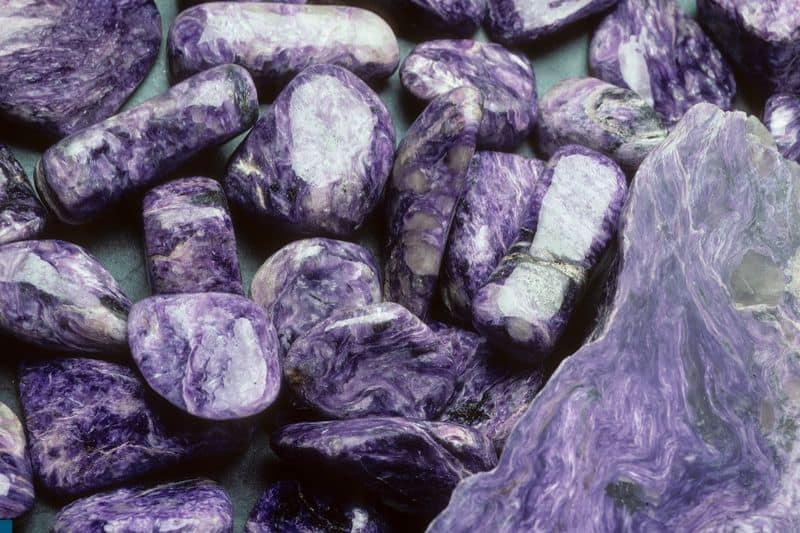
Charoite, a purple to violet silicate mineral, is known for its striking appearance and vibrant colors. When you first lay eyes on it, you’ll be captivated by its unique range of purple shades, which can vary even within a single specimen. This mineral is beautiful and displays interesting banding, swirls, scales, and radial and parallel habits due to its fibrous crystals.
As you dive deeper into the world of charoite, you’ll notice that it has a translucent, lavender-to-purple color and a pearly luster. You should be aware that charoite only occurs in massive formations, and its fractures have a conchoidal nature. The unusual swirling, fibrous appearance of this mineral and its intense color may lead some to mistakenly believe that it is synthetic or artificially enhanced.
Since charoite is found in abundance, it can be used for a variety of purposes. Rocks containing this mineral can be polished to reveal a stunning finish, making them perfect for ornamental stones or even gem material. The unique patterns and vibrant purple color make charoite a favorite among collectors and enthusiasts alike.
In conclusion, charoite is a striking purple mineral that is sure to grab your attention. Its distinctive color and fascinating patterns make it a valuable addition to your collection or the perfect choice for a statement piece in your home decor. Enjoy exploring the nuances of this mesmerizing mineral and the many ways it can be admired and utilized.
4. Lepidolite
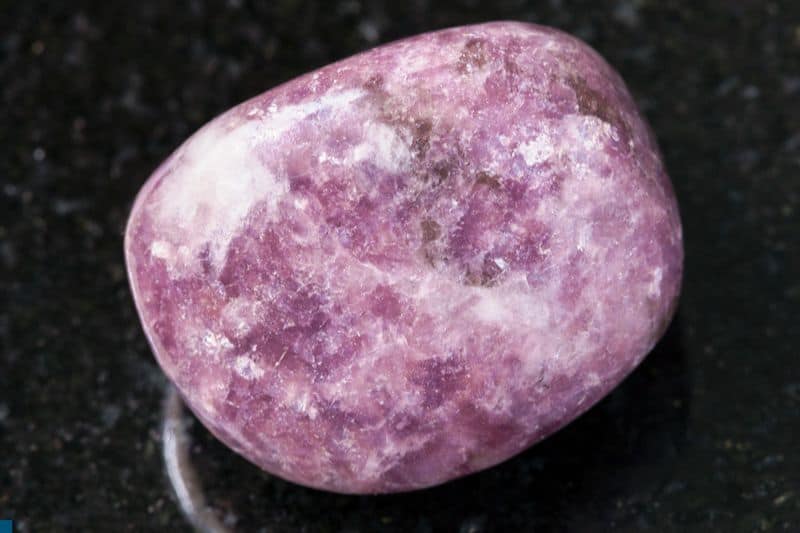
Lepidolite is a unique and eye-catching purple mineral. It belongs to the phyllosilicate group and is a member of the polylithionite-trilithionite series. Lepidolite is a lithium-rich mica mineral that can range in color from pink to purple, making it a beautiful addition to your rock and mineral collection.
You might be interested to know that lepidolite can only form in specific geochemical environments where high concentrations of lithium are available for mineral formation. That makes this mineral rare, as these particular environments are scarce.
As you explore lepidolite, you’ll notice its fascinating layered structure. These thin, flaky layers are a characteristic of the phyllosilicate group of minerals and can give lepidolite a glittery, iridescent appearance.
When hunting for lepidolite, you might find it more commonly in pegmatites composed of large crystals, like granite. This is because certain conditions are needed for its formation, specifically the presence of lithium-rich environments.
In summary, lepidolite is a captivating purple mineral that showcases the diversity and beauty of nature’s geological creations. Its rarity and unique properties make it a sought-after find for collectors and rock enthusiasts alike. So next time you’re out exploring, keep an eye out for this lovely purple treasure.
5. Kammererite
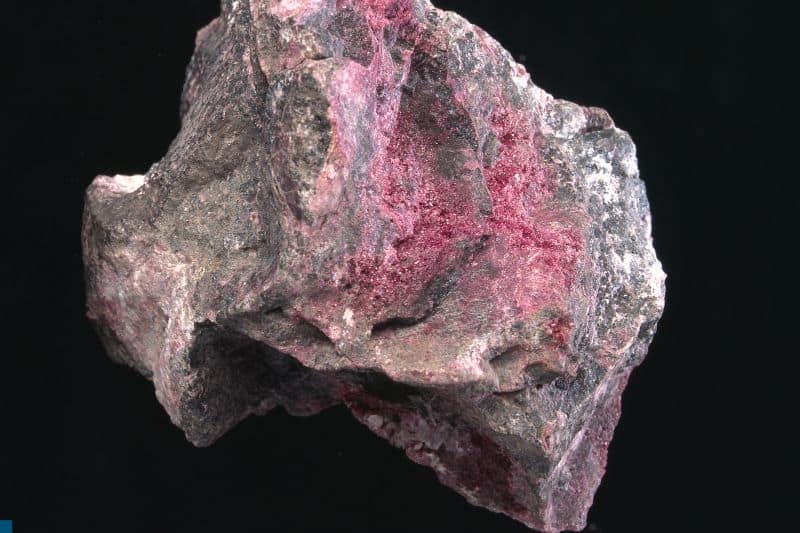
Kammererite is a rare chromium-rich variety of Clinochlore and a member of the Chlorite family. This unique mineral can be found in various shades of purple, from dark red to violet. You might be interested to know that kammererite crystallizes in the form of masses, pyramid-like micropoints, and hexagonal crystals.
This beautiful mineral can be found in various parts of the world, like Turkey’s Kop Daglari region. Its rarity and striking colors make it a sought-after gemstone for collectors and enthusiasts alike.
When you come across kammererite, you’ll notice its captivating beauty. Its deep shades of purple and its crystal structure make it stand out among other gemstones. However, keep in mind that, due to its scarcity, kammererite can be quite expensive and challenging to find.
Now that you know about kammererite, don’t forget to share your newfound knowledge with other rock and mineral enthusiasts. Friends and family will surely be impressed by this gemstone’s rarity and stunning colors.
6. Fluorite
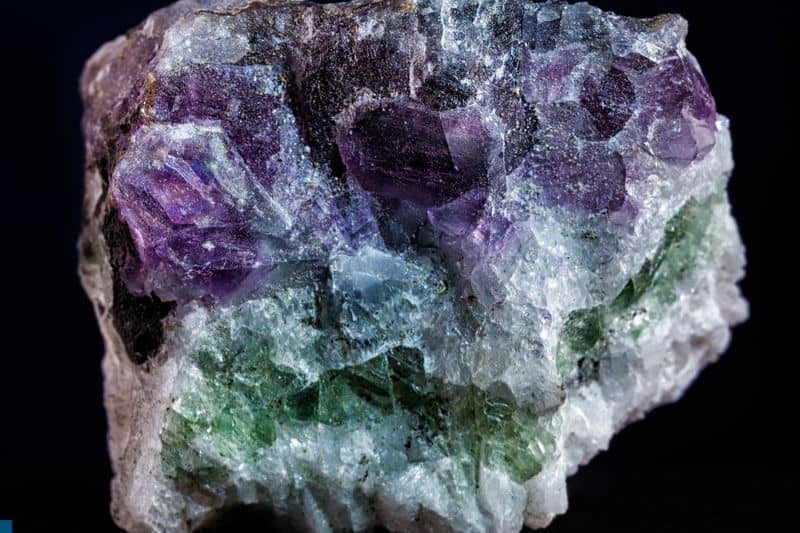
Fluorite, also known as fluorspar, is the mineral form of calcium fluoride (CaF₂). It belongs to the halide minerals and crystallizes in an isometric cubic habit, although octahedral and more complex isometric forms are not uncommon.
Fluorite is primarily a pore-filling mineral in carbonate rocks, such as limestones and dolostones. It is also often associated with low-temperature hydrothermal vein deposits that contain lead and silver ores, and less frequently within pegmatites and granites. In some instances, fluorite even precipitates at hot springs.
The color of fluorite is variable, ranging from colorless to various shades of purple, green, yellow, and even blue. Yet, it is most commonly recognized in its purple form. Its beauty and unique crystal structure make it a desirable gemstone for collectors and jewelry enthusiasts alike.
When exploring the world of purple rocks and minerals, fluorite is a fascinating specimen showcasing its captivating colors and properties. Its distinct isometric crystal structures add to its uniqueness, making it a colorful addition to your collection.
7. Purpurite

Purpurite is a fascinating manganese phosphate mineral that varies in color from brownish-black to deep shades of purple and even dark red. Its chemical formula is MnPO4, and it often contains varying amounts of iron depending on its source. As a purple gemstone lover, you’re sure to be captivated by its unique hue and rarity.
You might be interested to know that purpurite forms a series with the iron-bearing endmember heterosite, which has the chemical formula FePO4. This means that purpurite and heterosite are closely related minerals, but with different proportions of manganese and iron in their structures.
While exploring the world of purple gemstones, you might come across other minerals like sugilite and charoite that can resemble purpurite in terms of color. However, purpurite is rarer than sugilite and charoite, making it a unique addition to any gemstone collection.
Remember, when you’re examining purpurite, its refractive index is much higher than that of sugilite and charoite, which is one way to help distinguish between these different purple minerals. Whether you’re a collector, a healer, or just someone who loves the color purple, purpurite is a gemstone that can add a touch of intrigue and rarity to your collection.
8. Peacock Ore
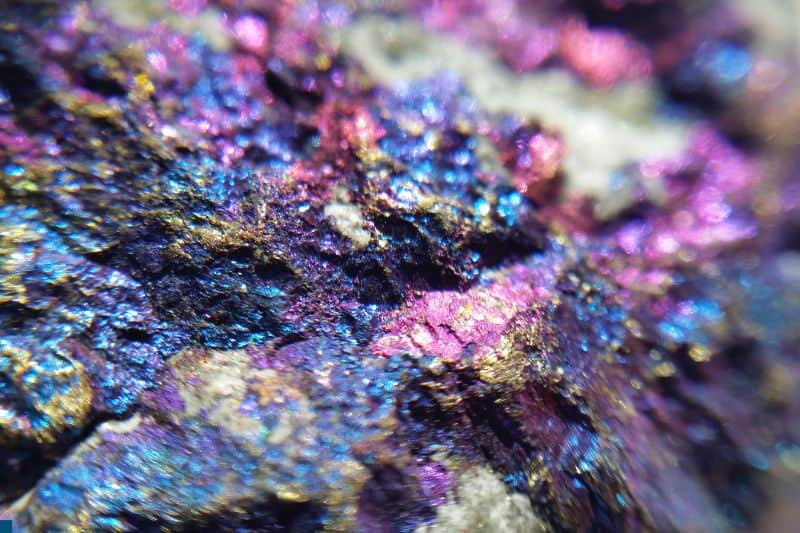
Peacock Ore, also known as bornite, is a unique and beautiful mineral that is quite popular among collectors. This ore gets its name from the striking iridescent colors, ranging from greenish-yellow to bluish-purple, that can be seen on its surface. The stunning hues make it a perfect addition to your mineral collection or a lovely decorative piece to brighten up your space.
When fresh, Peacock Ore has a metallic sheen and tarnishes to various iridescent shades of blue, purple, red, green, and yellow upon surface exposure. This interesting color phenomenon sets it apart from other minerals and makes it easily recognizable. It’s commonly found in mass accumulations and rarely as tiny crystals. On the Moh’s scale, its hardness is between 3 and 3.25, making it a relatively delicate gemstone.
As a sulfide mineral with a chemical composition of Cu5FeS4, Peacock Ore is an important ore of copper. Its beautiful colors and general scarcity contribute to its popularity, but it’s important to remember that it’s a delicate mineral and must be handled with care. To maintain its vibrant colors and avoid degradation, store Peacock Ore in a cool, dry place away from direct sunlight or humidity.
Peacock Ore’s eye-catching appearance and unique qualities make it an attractive choice for enthusiasts or simply anyone who appreciates the beauty of nature’s creations. So next time you come across a piece of Peacock Ore, remember to take a closer look and appreciate the intricate, iridescent hues that give this mineral its well-deserved name.
9. Phosphosiderite
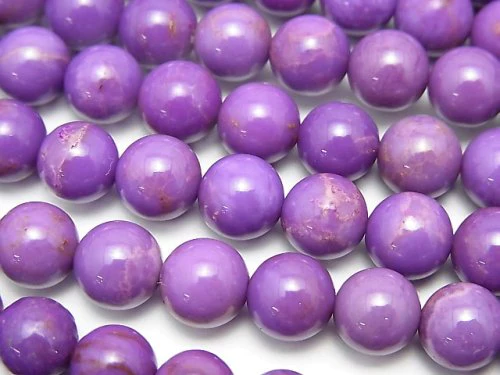
Phosphosiderite is a rare yet captivating mineral known for its distinct purple colorations. You might find this gem in shades ranging from reddish or purplish to violet, rose-red, and peachy-pink. It’s composed primarily of phosphate and iron, which give it its unique color and properties.
You might be intrigued by the unique crystalline structure of phosphosiderite. It often forms elongated to radial fibrous crystals, commonly found in pegmatites and as a surface or groundwater precipitate in phosphorous-rich environments. This gemstone is often associated with other phosphate minerals, such as members of the apatite group, lithiophyllite, strengite, and rockbridgeite.
Apart from its stunning appearance, phosphosiderite is well-known for its calming and soothing properties. If you ever come across this beautiful crystal, you’ll find that it’s believed to help alleviate stress, anxiety, and feelings of overwhelm, ultimately helping you feel more centered and grounded. This makes it an excellent addition to your collection if you’re seeking some inner tranquility.
To sum up, phosphosiderite is a unique and captivating purple mineral that can potentially benefit both your aesthetic and emotional well-being. Keep an eye out for this gem the next time you sift through rocks and minerals, and you might just find the perfect crystalline companion to help you stay calm and collected.
10. Siberite
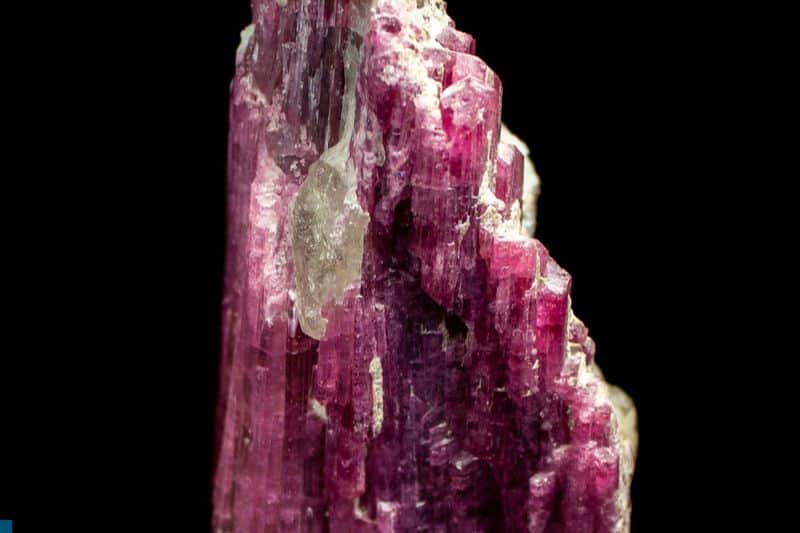
Siberite is a beautiful purple variety of Elbaite Tourmaline, known for its captivating color and high transparency. As you explore the world of purple rocks and minerals, you’ll find that Siberite stands out as a unique and enchanting gemstone. This mineral gets its name from the place where it was first discovered – Siberia. Let’s dive into the fascinating features of Siberite and learn more about what makes it so special.
Firstly, Siberite owes its captivating purple hue to the presence of lithium (Li) in its composition. This lithium-rich Elbaite is primarily sourced from pegmatite rocks, which are known for their large crystals and unique mineral compositions. The varying shades of purple in Siberite can range from lighter lavender hues to deep, rich purples—each shade adding character and depth to this extraordinary gemstone.
Due to its stunning color and impressive transparency, high-quality Siberite is often used as a material for fine jewelry. However, it’s important to note that the distribution volume of Siberite is not very high. This limited availability adds an element of exclusivity to these gemstones, making them even more intriguing for collectors and jewelry enthusiasts alike.
When you encounter Siberite in your exploration of purple rocks and minerals, take a moment to appreciate the gem’s exceptional beauty and rarity. The fascinating composition and sourcing of this lithium-rich Elbaite Tourmaline make it a unique addition to any collection or a stunning choice for your next piece of jewelry.
Remember to always admire the allure of Siberite responsibly and ensure that any gemstones you acquire come from reputable sources. This way, you can fully enjoy the magnificent charm of Siberite while preserving the sustainability and ethical practices in the world of gemstones.
11. Grape Agate

Grape Agate is a fascinating and beautiful purple mineral that can be a great addition to your rock and mineral collection. It’s called Grape Agate because of its unique appearance – it looks like clusters of tiny, purple grape-like spheres. However, it’s important to note that Grape Agate is not an actual agate, but a botryoidal purple chalcedony.
You can find this intriguing mineral in Indonesia and some parts of Utah, west of the Green River. When you observe Grape Agate, you’ll notice that its color can vary from light to deep purple hues. What makes it even more captivating is its drusy surface, which consists of tiny sparkling crystals that give the mineral a bit of a shimmer.
Keep in mind that while Grape Agate might not be a traditional agate, it still has that captivating allure that draws you in. So, if you ever get the chance to add Grape Agate to your collection, don’t hesitate! You’ll be mesmerized by its unique structure and gorgeous purple shades. Happy rock hunting!
12. Purple Apatite
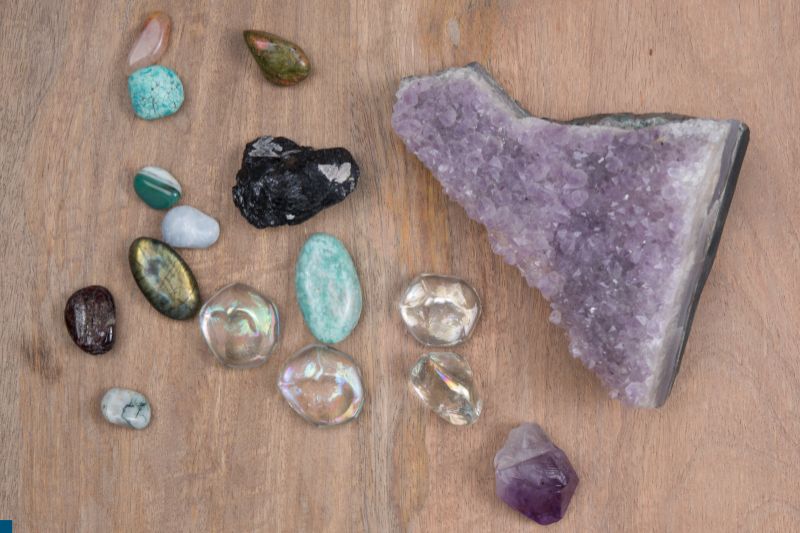
Purple apatite is a captivating mineral with a unique purple hue that can add a touch of magic to your rock collection. As you explore this fascinating mineral, you’ll learn that it belongs to a group of phosphate minerals, which can include hydroxyapatite, fluorapatite, and chlorapatite, depending on the crystal composition.
The stunning color of purple apatite is usually due to the presence of certain elements and can even appear in a range of shades, including white, yellow, brown, gray, red, pink, purple, blue, or green. So, when you get your hands on a piece of purple apatite, appreciate its vibrant shades and remember that it’s quite a rare find.
One of the interesting aspects of apatite is its deceptive appearance. In fact, the name “apatite” comes from the Greek word that means “to deceive” because it’s often mistaken for other minerals due to its similar appearance. So, as you add purple apatite to your mineral collection, keep in mind that you have a unique gemstone known for its ability to mislead even the most experienced collectors.
In summary, purple apatite is a beautiful and rare mineral that can make a fine addition to your collection. As you explore this alluring mineral, remember its intriguing origins and deceptive nature. Enjoy your journey into the world of purple apatite and let it captivate your imagination.
13. Rhodolite Garnet
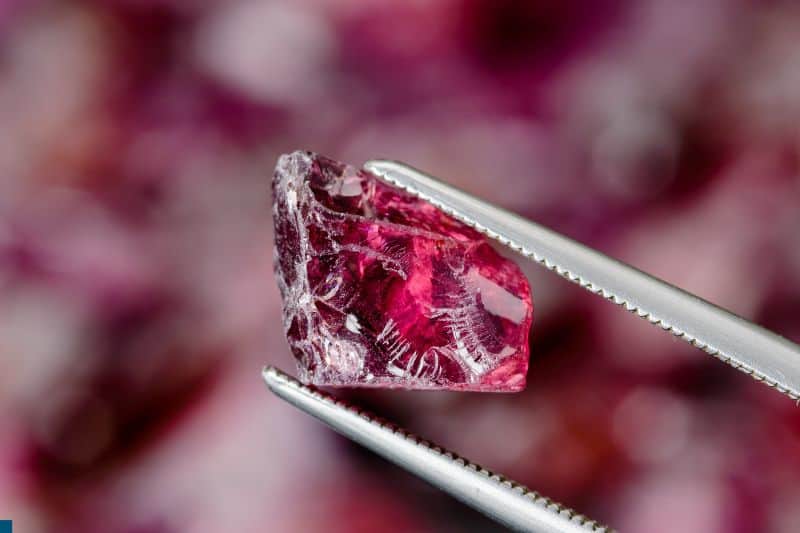
Rhodolite garnet is a captivating gemstone with stunning purple-red hues that can steal your heart. This beautiful stone is a variety of garnet and exhibits a mesmerizing color shift from burgundy to deep purple, depending on the light. As you explore the world of purple rocks and minerals, rhodolite garnet is definitely one to watch.
When it comes to physical properties, rhodolite garnet is known for its rich, transparent color and a hardness of 7-7.5 on the Mohs scale, making it suitable for various types of jewelry. Just imagine wearing a lovely pair of earrings or a delicate pendant showcasing this wonderful gemstone. The vibrant color of rhodolite garnet will undoubtedly make you stand out amidst the crowd.
In addition to its gorgeous appearance, rhodolite garnet is believed to have metaphysical properties that could benefit you on a deeper level. Some associate this gemstone with healing energy, emotional balance, and prosperity. While wearing a beautiful piece of rhodolite garnet jewelry, you might also enjoy the positive vibe it brings to your life.
If you feel the urge to add rhodolite garnet to your collection or give it as a meaningful gift, there are plenty of options to choose from. From online retailers to specialized gemstone stores, you’ll likely find stunning jewelry pieces incorporating this unique and eye-catching purple rock.
So, go ahead and immerse yourself in the fascinating world of rhodolite garnet. Dive into its enchanting hues, learn more about its properties, and perhaps even start a collection. You’ll undoubtedly appreciate the beauty and mystique of this remarkable purple gemstone.

